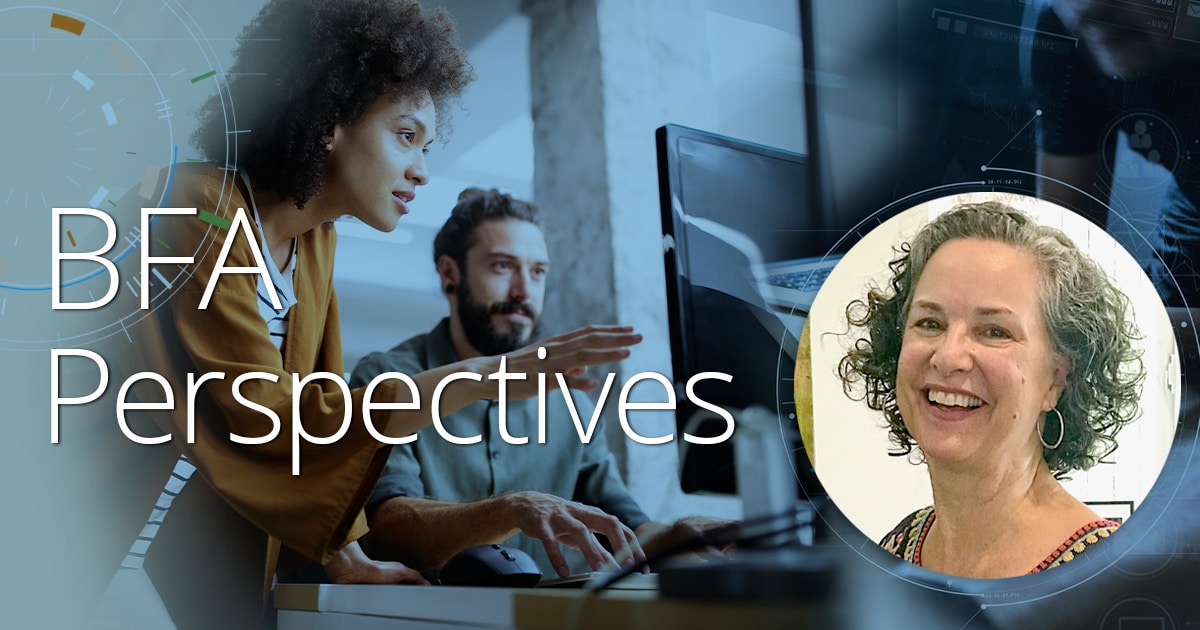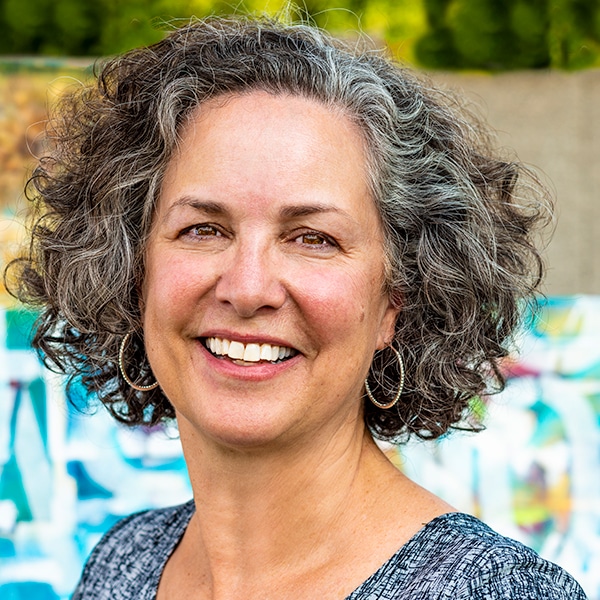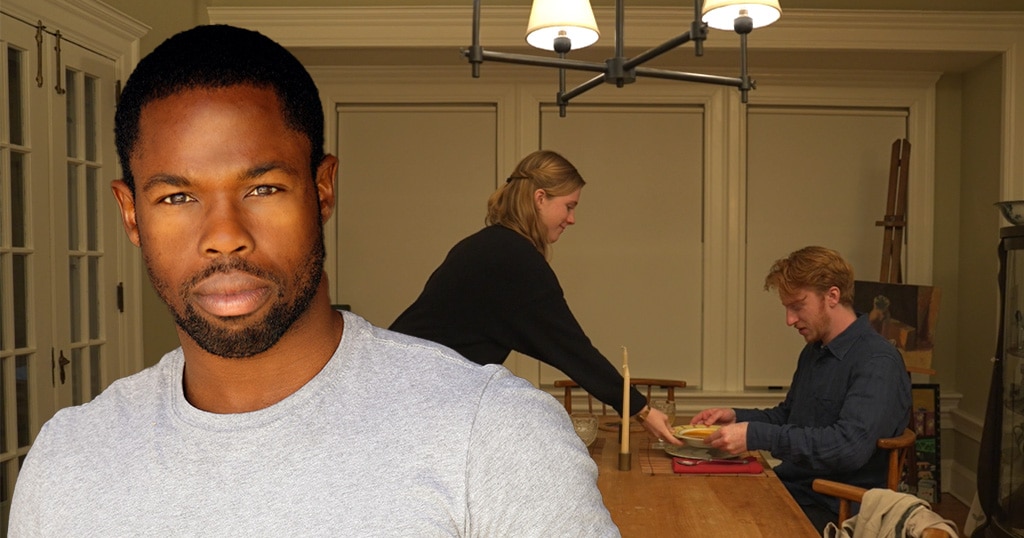Perspectives on the BFA: How the Program Was Designed

When I joined Sessions College in Spring 2019, the Sessions College team was already in the early planning stages of developing its first ever Bachelor’s degree program. From my previous career I brought extensive experience in the design field and in education. I had led academic teams and has served as Dean of Academic Affairs, Program Chair, Doctoral Development Faculty, and Instructor at a wide range of institutions, both online and in the traditional classroom. I have taught at Arizona State University, a variety of community colleges, a local art college, University of Phoenix, and served as the Dean of Academic Affairs for eight years at the Art Institute of Phoenix.
Equally important, throughout my career, I have also been engaged in the design field. In the Phoenix area I was fortunate to implement and led the graphic design of three different museums (Scottsdale Museum of Contemporary Art, Arizona Science Center, and Arizona Historical Museum) and to receive the first Arizona AIGA fellow award.
With all this experience, I was delighted to join the team at Sessions College and immerse myself in the opportunity to work with creative and passionate staff, faculty, and students to design our industry relevant and engaging online BFA degree program.
You might be surprised to learn that the design and development of the program was mostly accomplished during the COVID-19 crisis, as many of our staff were deeply engaged in our renewal of institutional accreditation in fall 2019 and spring 2020. In March 2020, having successfully hosted our accreditation visit, we turned our full focus to our Bachelor of Fine Arts (BFA) in Graphic Design. While our society grappled with the coronavirus, the educators at Sessions College were hard at work designing our BFA curriculum, socially distanced, of course!
What are the key aspects of how this innovative new online program was designed? In this blog post, I’d like “pull back the curtain” on how the Sessions College team members and stakeholders focus on developing industry-relevant and engaging educational programs.
An Agile, Collaborative Design Process
The first principle in developing this BFA program, and indeed any program, is that it must flow from our school mission. At Sessions College, we consistently focus on providing students with engaging, industry-relevant courses and programs to help them to develop and advance their creative voice. The new BFA program needed to build on the strong foundation provided by our professionally-oriented Associate Degree program, and introduce skills and subjects that would help us develop BFA graduates who had the skills and the polished portfolios that employers seek.
To help us define the skills and attributes, we turned to our knowledgeable institutional stakeholders for input: our Advisory Board, our experienced faculty members, and just as important, our students!
Did you know that Sessions College has an external Advisory Board of highly experienced art/design professionals? Each year, we survey our Advisory Board members to gather their industry perspectives regarding the skills and attributes a recent graduate should demonstrate in preparation for entering their creative field. Based upon their feedback we identify skills that need to be addressed within our courses and programs of study.
Our Advisory Board members were instrumental in reviewing our curriculum plans and making recommendations that influenced the direction of the program. For example, one input was that employers were looking for graduates who could conceptualize and present creative briefs. Another input was that employers sought graduates who could produce solutions to business problems, not just pretty artwork. A third input was that graduate portfolios needed to show a depth and quality in specific areas, as opposed to the ability to tackle a range of projects.
We involved our most experienced Faculty members in a similar review process—defining what skills, attributes, and professional standards we wanted to see from our graduating BFA students, and assessing potential areas for growth among the work of our recent graduates. Two very talented and engaged Sessions College Department Heads, Andrew Shalat and Kristen Becker, were immersed in program design and course development. This highly collaborative process shaped not only the goals and subjects taught in our upper level classes but also some of the innovative ways in which the classes are structured and delivered.
Of course, no collaborative process would be complete without the input of our most valued stakeholders, our students. To help us “workshop” the BFA program we held a focus group with our 2019-20 Student Ambassador team, where we presented and discussed program features to assess what proposed features our current students prized. Among the questions addressed: Should the BFA program include an internship experience? How important was it to be able customize the program to your creative or career goals? What business skills did students feel were important to address for graduates seeking entry-level or freelance work?
Recent graduates and current students were also invited to provide input on the program in an online survey which had more than 100 respondents.
The result of all this intense collaboration among our institutional stakeholders was a robust and rich set of program outcomes that we believe truly reflects the attributes that design employers are looking for, and which provided a set of guiding principles for developing the program.
Program Evaluation and Review
There are many other facets of designing and developing a program at Sessions College, of course. Any new program that we develop must be approved by our state licensing authority The Arizona Board of Private Postsecondary Education and our institutional accreditor DEAC before it can be released. As part of this review process, subject matter specialists from other accredited colleges carefully evaluate the rigor and objectives of each online course to ensure that it meets the expected standards in higher education. Curriculum plans must be developed to demonstrate that a program is equivalent in nature and goals to other existing accredited programs. In our case, we took care to align our program with the standards for BFA programs established by NASAD, the specialized accreditor for art and design colleges.
All of these processes are important, but in my view the creative, collaborative process with which we develop our programs—and our focus on producing the outcomes that employers want—may be the key to this program’s quality.
The new BFA program has some features that we can’t wait to see in action. For example, our upper level students will have the opportunity to collaborate with a faculty mentor to develop a customized educational plan to align their project work with their career goals. Upper level students will develop research and presentation skills that are critical to their success in the workplace. And they will do so in a course that encourages them to develop a global perspective by engaging in the increasingly international language and culture of visual communication.
Education is a creative process and a partnership. As an online institution we are fortunate to provide an opportunity for thousands of students around the world, and our faculty and students “partner” with us to make it happen.
For more information about the BFA program, visit the Bachelor’s Degree in Graphic Design program page or read our new BFA Program Announcement. Visit our Education area for more information on our faculty and instructional design team.

Dr. Epstein is the Dean of Academic Affairs at Sessions College. A former Dean at the Art Institute of Phoenix, Meryl has extensive experience in design, education, and leading academic teams. Meryl has designed museums and was the recipient of the first Arizona AIGA fellow award. Read more articles by Meryl.
RECENTLY ON CAMPUS

























 What Photoshop’s new AI Tools Mean for the Creative Community
What Photoshop’s new AI Tools Mean for the Creative Community
 Gaining Confidence and Working with Clients
Gaining Confidence and Working with Clients Exploring the Artistry of Filmmaking
Exploring the Artistry of Filmmaking